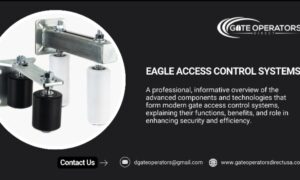In Washington, where our pets are often part of the family, creating a safe and secure outdoor environment is essential. A chain-link fence offers a cost-effective, durable solution for keeping pets safe—whether you’re in the heart of Seattle, a suburban backyard in Everett, or a rural property in Snohomish. However, installing the right fence takes more than just rolling out mesh. You need to consider your pet’s size, behavior, and local zoning laws.
Let’s explore the best practices for chain-link fence installation that prioritizes height, strength, and safety for your four-legged companions.
Why Choose Chain-Link Fencing for Pet Safety
Chain-link fencing remains a top choice for pet owners thanks to its affordability, visibility, and reliability. In Washington, where wet weather can take a toll on wooden fences, galvanized or vinyl-coated chain-link offers long-term resistance to rust and moisture.
Additionally, it’s flexible for all kinds of properties—whether you’re installing it around a small backyard or a large perimeter. For pet-focused projects, many homeowners turn to custom fencing solutions in Washington to ensure they meet safety and comfort standards from the start.
Fence Height Recommendations by Pet Type
Height matters when it comes to preventing pet escapes. Here’s what to consider based on pet size and agility:
🐶 Small Breeds (Under 20 lbs)
- Fence Height: 3 to 4 feet
- Tips: Make sure the bottom is tightly secured—small dogs may dig or slip underneath.
🐕 Medium Breeds (20–50 lbs)
- Fence Height: 4 to 5 feet
- Tips: Add bottom tension wire to keep the fabric taut and avoid bending.
🐕🦺 Large or Athletic Breeds (Over 50 lbs)
- Fence Height: 5 to 6 feet minimum
- Tips: For jumpers or climbers, add fence toppers or privacy slats to reduce visual stimulation and discourage attempts.
In Washington, local building codes—such as those in King and Snohomish Counties—often limit residential fence heights to 6 feet in backyards. It’s crucial to check with your local permitting office before installation.
Key Security Features to Include
1. Dig-Proof Bottoms
Digging is a common escape tactic for dogs. Bury a portion of the fence 6–12 inches underground or pour a concrete mow strip along the perimeter.
2. Lockable, Self-Closing Gates
Install gates with spring-loaded hinges and latches that automatically close and lock. This prevents accidental openings and ensures pets stay in.
3. Rounded or Capped Tops
Avoid sharp chain-link edges. Rolled tops or safety caps protect your pet from cuts and injuries if they jump or lean against the fence.
4. Privacy Panels or Slats
For anxious or territorial dogs, adding privacy panels helps block views of pedestrians, wildlife, or neighboring animals—reducing barking and stress.
Weatherproofing Tips for WA Climates
Chain-link fences in Washington must stand up to rain, snow, and seasonal temperature shifts:
- Choose galvanized steel with vinyl coating to prevent rust.
- Anchor posts below the frost line (at least 24–30 inches) to prevent movement during freeze-thaw cycles.
- Use tension bands and sturdy brackets to brace against heavy winds common in the Puget Sound region.
If you’re unsure which features you need, working with a local fencing expert who understands Washington’s terrain and weather can make all the difference in fence longevity.
Installation & Long-Term Maintenance
Installation typically takes 1–2 days for an average residential yard. Once installed, chain-link fences require minimal maintenance—just occasional rinsing and inspections for rust or loose hardware.
For larger breeds or high-energy pets, it’s smart to inspect the fence monthly for signs of wear, digging, or stretching.
And if you’re planning a broader exterior update or reconfiguring your yard for multiple pets, integrating a pet-safe fence as part of your outdoor remodeling in Washington can streamline your project and increase property value.
Conclusion: A Safe Fence Means a Happier Pet
With the right height, materials, and reinforcements, a chain-link fence can provide years of reliable protection for your pets. From securing playful puppies to containing curious cats, the design matters just as much as the installation quality.
Whether you’re upgrading an old fence or planning a new one, thoughtful planning tailored to your pet’s behavior—and the local climate—will ensure peace of mind and happy tails.



































